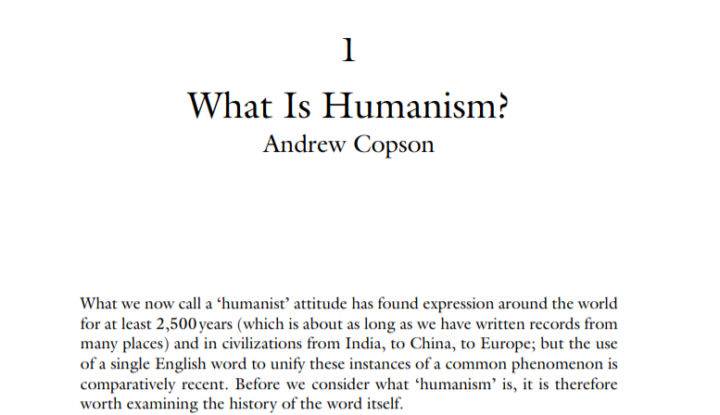Last month, I posted a short video each day on a chapter from a book I edited on humanism – the Wiley Blackwell Handbook of Humanism. A link to the chapter can be found (for free!) here.
For anyone who is interested in learning more about humanism – here is a collection of the videos covering everything from the definition of humanism to the humanist approach to life.
1. The first part of this essay is about the definition of humanism. Like all words, it has a chequered history and a contested present, but this essay is about humanism as a non-religious approach to life.
2. The second part of the essay is about what type of thing humanism is. Is it a worldview, a philosophy, a religion? I settle on saying that it is an approach to life but note the debate!
3. The rest of the essay is divided in five parts, each on an aspect of the humanist approach to life. In the first. ‘Understanding Reality’, we look at concepts like truth, science, inquiry, and naturalism.
4. The next aspect of humanism is ‘Understanding ourselves’ – humanists accept that we are evolved creatures, part of the natural world, ending at death.
5. Now we come onto the purpose of life, in section three. Humanists don’t see meaning as something that exists, waiting to be discovered, but as something we create. We look at concepts like the good life and the whole person, optimism, and the pursuit of happiness.
6. The fourth aspect of the humanist approach explored is its views on morality. Humanists see morality as a product of nature and of human culture, the aim of which should be the happiness and fulfillment of people.
This section also looks at the humanist origins of moral concern for other animals and for people globally, not just people close to us.
7. Practical action is the last aspect of humanism we look at. Humanist organisations and individuals put their beliefs and values into action in all sorts of ways.
